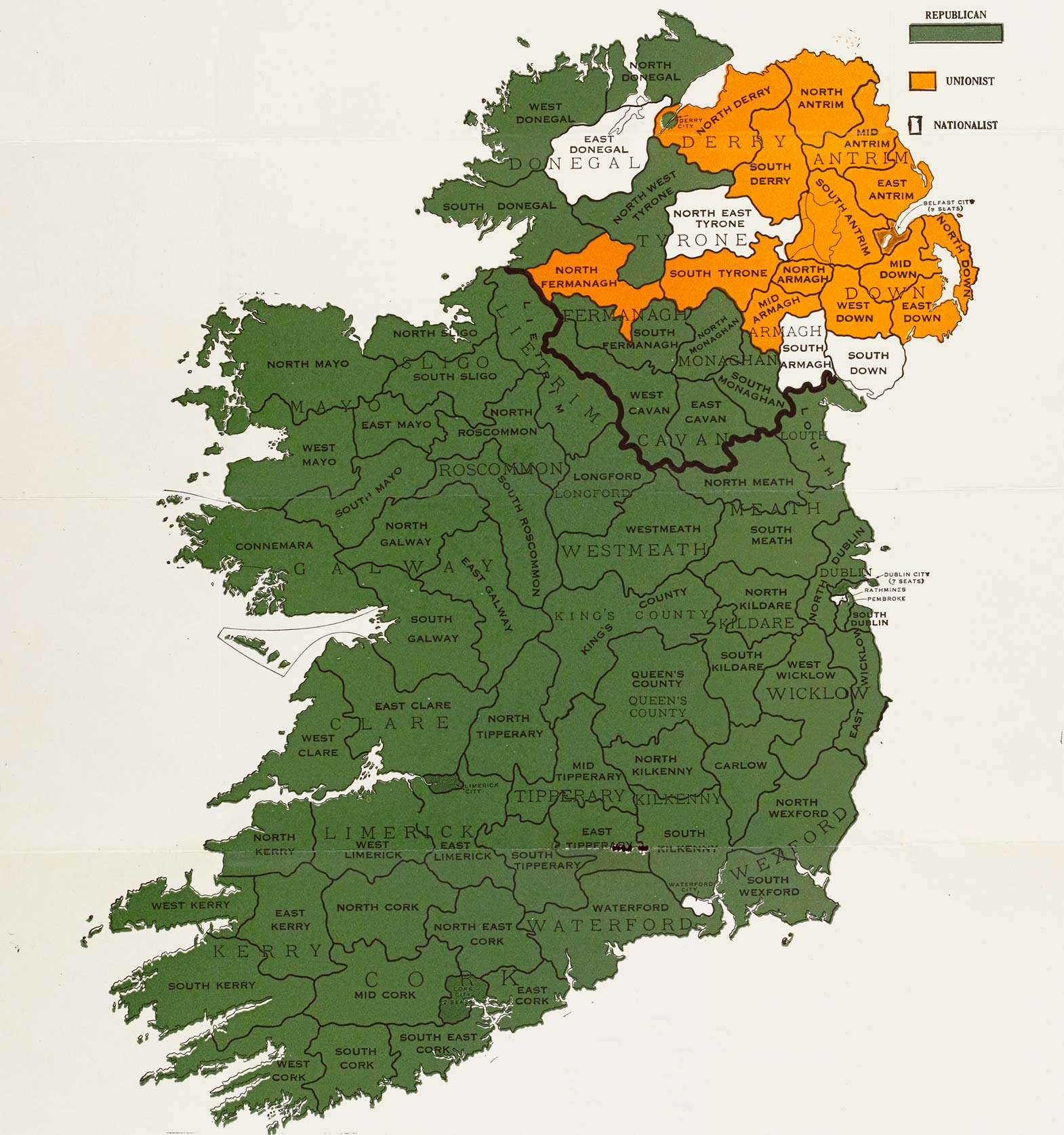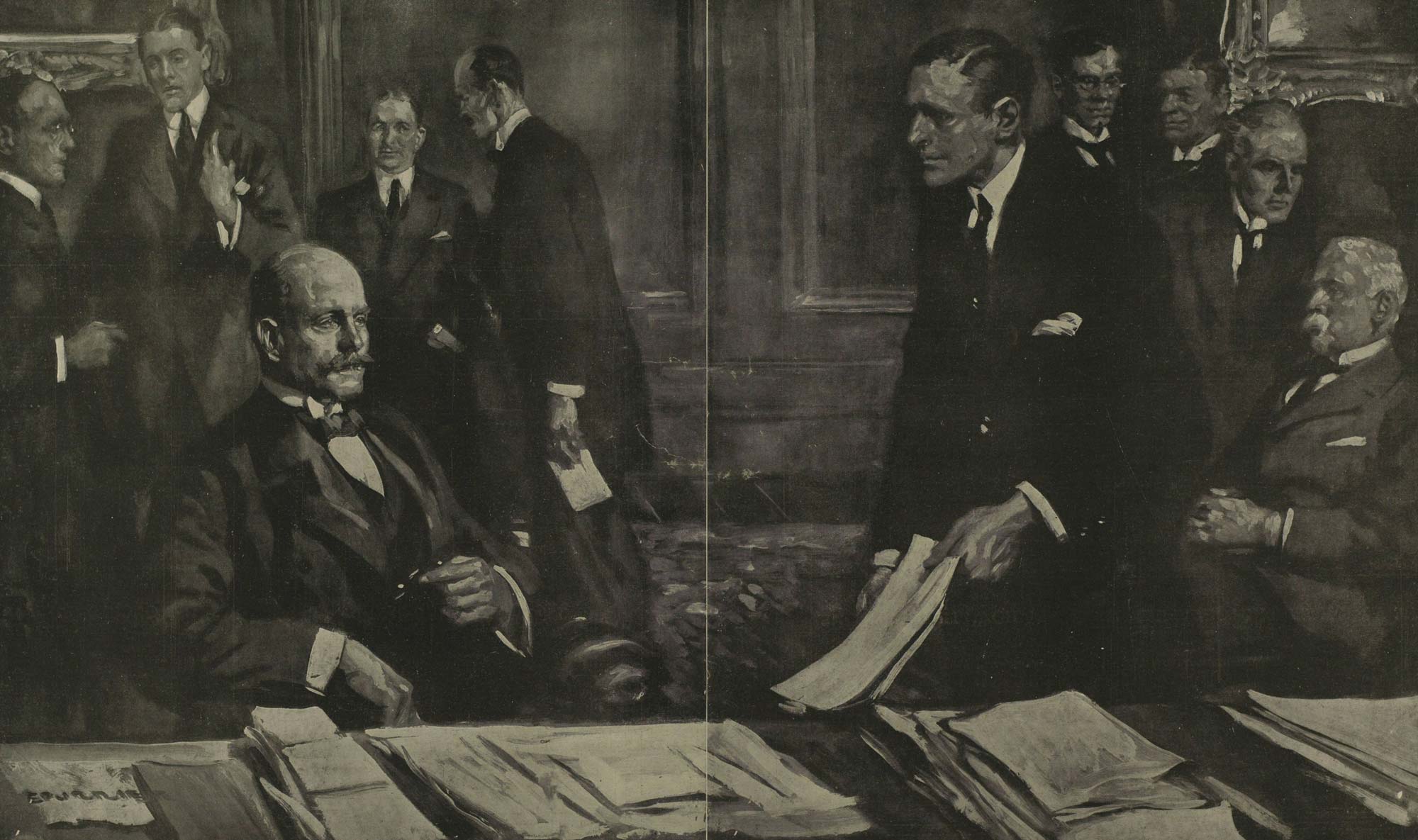Partition looms as committee established to find Irish solution
London, 13 October 1919 - The British government has appointed a cabinet committee to draft a new home rule bill for Ireland.
Walter Long has been chosen to chair this committee, and members include F.E. Smith, the Lord Chancellor; Edward Shortt; Herbert Fisher; Sir Worthington Evans; Sir Auckland Geddes; as well as the Chief Secretary, Ian Macpherson, and the Lord Lieutenant of Ireland, John French.
The fact that many of the members of the new committee have unionist leanings has been met with a sceptical response in the nationalist press. One newspaper suggested that if Sir Edward Carson himself had been responsible for nominating personnel to the committee it would hardly have looked any different.
The expectation is that the cabinet committee will act speedily in order to submit a plan to parliament during the autumn session.

Cartoon showing the Irish people insisting on nothing less than full dominion home rule. It also makes reference to Walter Long and Edward Shortt, both of whom are appointed to the committee (Image: Sunday Independent, 19 October 1919)
No rest for the wizard', a cartoon from satirical magazine Punch depicting the Prime Minister Lloyd George trying to fall asleep while the 'Irish question' mosquito buzzes around him.
The Irish Independent has speculated that the reason for the fresh urgency of the British effort to settle the matter of Irish self-government is grounded in two key discoveries: firstly, the government has received advice that the 1914 Home Rule Act on the statute books will come into operation once the peace treaty with Turkey is ratified; secondly, the support for Irish self-determination in the United States is so strong that it serves as an impediment to cordial Anglo-American relations and imperils the establishment of the League of Nations.
It is becoming increasingly apparent that the cabinet committee will not consider all options available to them on the Irish question. Before they even begin their work it is being reported that no coercion of Ulster unionists will be attempted; assurances have already been given that the ‘integral union of Ulster with the British parliament’ will not be touched. The idea of recognition for a republic in Ireland is also off the table.
It is also being reported that the most likely safeguard to be offered to Ulster is the exclusion of six counties, giving each county the right to vote itself back into line with the rest of the country if it wants. The six counties would possibly also have to include Fermanagh and Tyrone both of which have a majority – 56.18% and 55.39% respectively – catholic population.

Constituency map showing the result of the 1918 general election. The green represents Sinn Féin, the white represents the Irish Parliamentary Party and the Orange represents unionist. The most recent home rule bill suggests excluding six counties in the north east (Image: National Library of Ireland)
Any scheme based on the partition of the island is, the Irish Independent remarked, ‘doomed to failure. Ireland will not submit to mutilation or dismemberment.’
Another possibility is that the cabinet committee will opt to defer any decision and renew for a further year.
The scepticism that has been voiced in Irish nationalist circles about the cabinet committee has not been universally shared. ‘Never’, the parliamentary correspondent of Lloyd’s News believes, ‘has the prospect of an Irish settlement been so bright as it is at the present moment.’
‘The mere fact that men like Walter Long and the present Lord Chancellor, who took such a stubborn part in opposing Home Rule, are engaged in drafting a bill to give nationalist Ireland a comprehensive scheme of self-government is surely an omen of the very first order. Still more significant is the fact that Sir Edward Carson is in close touch with the Government.’
The fact that the very points that are regarded as drawbacks on one side of the Irish Sea are seen as strengths on the other gives some idea of the difficulties that lie ahead.
[Editor's note: This is an article from Century Ireland, a fortnightly online newspaper, written from the perspective of a journalist 100 years ago, based on news reports of the time.]





















